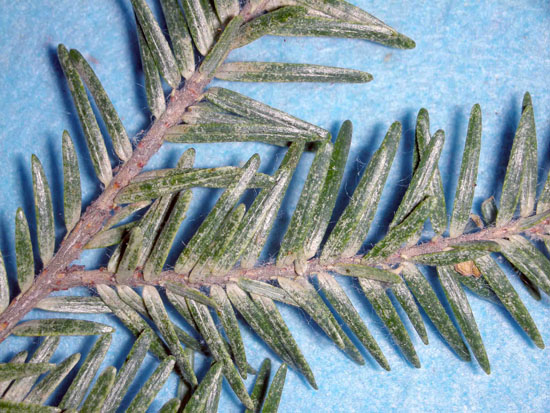Issue 8, June 12, 2009
Scouting Watch
Emerald ash borer has been out and flying in Chenoa, IL in McLean County since June 8, so new emergence holes will be present in ash. With the flight season lasting for the next couple of months, be extra careful transporting ash logs and wood debris. Remember that there are extra quarantine restrictions on ash movement during this time. Those regulations can be reviewed on the Illinois Department of Agriculture EAB web site.
Bagworm will have hatched in southern Illinois. Hatching should be occurring in central Illinois at this time, but limited scouting in the Champaign area indicates that there are few or no eggs that have successfully overwintered. Eggs overwinter inside the female's body inside last year's bag. I have checked a dozen or so bags and have yet to find any viable eggs or hatched larvae. Probably the cold winter temperatures in central and northern Illinois greatly reduced the number of bagworms that will be present this year. Be sure to scout for young larvae before you spray. We recommend waiting to spray for a couple of weeks past egg hatch to allow the larvae to finish ballooning from tree to tree. So even in southern Illinois, sprays will be more efficient later this month.
Spruce spidermite is still present in central and northern Illinois but numbers appear to be declining. Generally, we expect spruce spidermite to switch to over-summering eggs on the foliage in central Illinois around mid-May. Probably the cooler and possibly rainy weather has delayed this, resulting in a longer feeding and damage period than normal. In northern Illinois, feeding usually ceases for the summer around early June. Be watchful for damage to continue, particularly if the weather stays cool.

Twospotted spidermite and its relatives including honeylocust mite and oak mite are likely to be slow in building populations. These warm season mites prefer hot, dry weather as they are very susceptible to fungal disease. These fungal diseases are not the same ones that cause damage to plants, but they do better under the cool, wet conditions that the plant fungi prosper under. It is unlikely that these mites will become a problem until it turns warmer and drier.--Phil Nixon, Marion Shier, Greg Smith
Author:
Phil Nixon